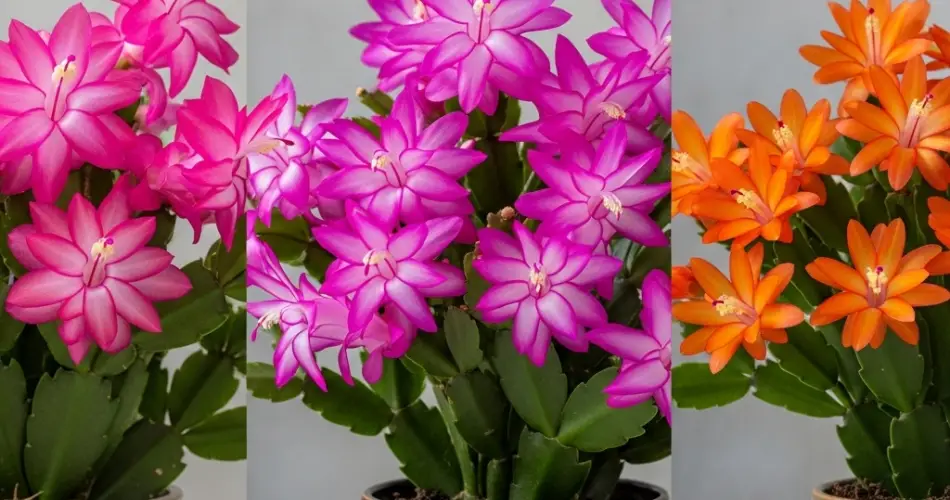Holiday cacti—Christmas, Thanksgiving, and Easter cactus—are popular houseplants known for their vibrant, seasonal blooms and uniquely shaped stems. Despite their name, these plants are not true desert cacti; instead, they are epiphytes that naturally grow on trees and rocks in tropical rainforests. This origin influences the kind of soil they prefer. If you’re growing any of the holiday cactus varieties, using the right soil mix is crucial for healthy growth and abundant flowering.
Unlike desert cacti that thrive in gritty, dry soil, holiday cacti require a well-aerated mix that retains some moisture but drains quickly. The wrong type of soil can lead to root rot, poor blooming, or stunted growth. Here’s what you need to know about creating or choosing the ideal soil mix for your holiday cactus plants.
Understanding Holiday Cactus Needs
To mimic their native habitat, holiday cacti need a soil mix that is:
-
Well-draining: To prevent root rot and allow oxygen to reach the roots.
-
Slightly acidic: A pH between 5.5 and 6.5 is ideal.
-
Moisture-retentive: They like regular moisture but not soggy conditions.
-
Light and airy: To replicate the loose organic matter of their natural environment.
Commercial potting soils designed for succulents or tropical plants may work with some adjustments, but the best results often come from preparing a custom mix tailored to their unique requirements.
Ideal Soil Ingredients
To create a suitable mix, focus on balancing organic material (for moisture and nutrients) and inorganic matter (for drainage and aeration). Here are the key components:
1. Peat Moss or Coconut Coir
This provides organic matter that retains moisture while remaining breathable. Coconut coir is a more sustainable alternative to peat moss and offers similar benefits. It helps maintain the slightly acidic conditions holiday cacti prefer.
2. Perlite or Pumice
These lightweight, porous materials promote excellent drainage and prevent compaction. They also increase aeration around the roots, which is essential for preventing rot.
3. Pine Bark or Orchid Bark
Adding bark helps mimic the natural forest floor environment. It improves texture and allows water to flow through the mix freely, reducing the risk of waterlogging.
4. Compost or Leaf Mold (Optional)
A small amount of compost can provide beneficial microbes and nutrients. However, use it sparingly to avoid creating a mix that holds too much water.
Recommended Soil Mix Recipes
Here are a few soil mix recipes that work well for all holiday cactus types:
Basic Mix:
-
2 parts peat moss or coconut coir
-
1 part perlite
-
1 part pine bark
Fast-Draining Mix:
-
1 part potting soil
-
1 part perlite
-
1 part orchid bark or coarse sand
DIY Tropical Epiphyte Mix:
-
2 parts coconut coir
-
1 part horticultural charcoal
-
1 part orchid bark
-
1 part perlite
Each of these recipes balances moisture retention with fast drainage and good aeration—ideal conditions for healthy roots and prolific blooming.
Tips for Choosing Pre-Made Soil
If you prefer to buy a ready-made mix, select one labeled for orchids, African violets, or epiphytic plants rather than cactus or succulent mixes, which may be too dry or coarse. You can also enhance a commercial cactus mix by blending in peat moss and bark to retain more moisture.
Before potting, moisten the mix lightly so it clumps slightly in your hand without dripping. This helps the roots settle in more easily and ensures even moisture from the start.
Additional Potting and Soil Care Tips
-
Use a pot with drainage holes: This prevents excess water from sitting at the bottom, reducing the risk of root rot.
-
Repot every 2–3 years: As the soil breaks down, it loses structure and nutrients. Repotting refreshes the mix and encourages new root growth.
-
Avoid compacted soil: If the soil becomes dense or hard, it’s time to replace it.
-
Check moisture levels before watering: Let the top inch of soil dry out before watering again to maintain the right moisture balance.
Final Thoughts
The right soil mix can make a big difference in the health and flowering of your holiday cactus. These beautiful plants may have cactus in their name, but they need a more tropical, moisture-friendly environment than their desert cousins. By using a light, well-draining, slightly acidic soil mix rich in organic matter, you’ll provide the perfect foundation for your holiday cactus to grow, bloom, and thrive year after year. Whether you blend your own or enhance a store-bought option, your plants will thank you with stunning blooms each holiday season.



